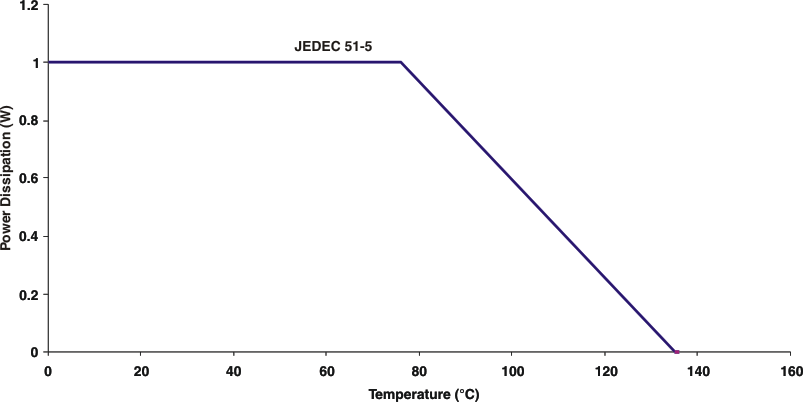SLVS822F March 2009 – April 2024 TPS798-Q1
PRODUCTION DATA
- 1
- 1 Features
- 2 Applications
- 3 Description
- 4 Pin Configuration and Functions
- 5 Specifications
- 6 Detailed Description
- 7 Application and Implementation
- 8 Device and Documentation Support
- 9 Revision History
- 10Mechanical, Packaging, and Orderable Information
Package Options
Mechanical Data (Package|Pins)
- DGN|8
Thermal pad, mechanical data (Package|Pins)
- DGN|8
Orderable Information
7.3.2 Thermal Layout Considerations
The amount of heat that an LDO linear regulator generates is directly proportional to the amount of power the device dissipates during operation. All integrated circuits have a maximum allowable junction temperature (TJ max) above which normal operation is not assured. The operating environment must be designed so that the operating junction temperature (TJ) does not exceed the maximum junction temperature (TJ max). The two primary environmental variables that can be used to improve thermal performance are air flow and external heat sinks. The purpose of this section is to help determine the proper operating environment for a linear regulator that operates at a specific power level.
In general, the maximum expected power (PD max) consumed by a linear regulator is computed as shown in Equation 6:
where:
- VIN(avg) is the average input voltage
- VOUT(avg) is the average output voltage
- IOUT(avg) is the average output current
- IQ is the quiescent current
For most TI LDO regulators, the quiescent current is insignificant compared to the average output current; therefore, the term VIN(avg) × IQ can be ignored. The operating junction temperature is computed by adding the ambient temperature (TA) and the increase in temperature as a result of the regulator power dissipation. The temperature rise is computed by multiplying the maximum expected power dissipation by the sum of the thermal resistances between the junction and the case (RθJC), the case to heat sink (RθCS), and the heat sink to ambient (RθSA). Thermal resistances are measurements of how effectively an object dissipates heat. Typically, the larger the device, the more surface area available for power dissipation and the lower the device thermal resistance. Figure 7-4 shows the relationship between power dissipation and temperature.
 Figure 7-4 Power Dissipation vs Temperature
Figure 7-4 Power Dissipation vs Temperature